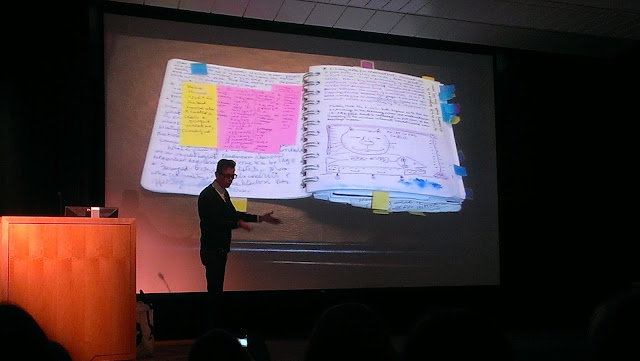Almost every day, I hear kids classify work as "easy" or "hard." They want to know ahead of time that the assignment I'm giving isn't too hard, that they can manage it without breaking a sweat. Other times, they take one look at the work and write it off as simple busy work. Either situation breaks my heart.
You see, there is value in everything we do.
No matter the task, my second graders have an opportunity to learn. All the time. Not occasionally. All. The. Time.
For some students, writing paragraphs comes easily. The words flow from their pencils and they are eager to share their thoughts. For them, the challenge is clear--take the concepts and make it your own. For others, the real task lies in commanding their letters, words, and sentences to stay within the tiny confines of the dreaded blue lines on the page.
Everyone has a challenge, and one is no better or worse than another.
They need to hear me say this. A lot. Like I said before, second-grade brains think assignments are either easy or hard. One or the other. You either know it or you don't. Sometimes their peeky little eyes can't help but glance sideways at another's work. Am I doing this right? Am I smart? Am I the best? I can only imagine the worries they encounter with such a fixed mindset.
That's why a core group of my teacher-friends from college are sharing and posting like crazy about something called a growth mindset. Seriously, I can't enjoy one night of mindless social media without being inundated with the "growth mindset" posts. Finally, I caved and started reading and watching. Here are a few of my favorite:
My class watched the Sesame Street video and we refer back to it anytime a student faces a "setback" in our room. They really like it.
I think the growth mindset works easily with the kids that are working hard to build confidence, both academically and socially. We can quickly identify which tasks are difficult for them and use the growth mindset to praise and guide their development.
For the kiddos who excel in one--or all--subjects, the growth mindset still applies, although it is sometimes more difficult to explain and demonstrate. Rather than constantly moving them "vertically" through curriculum, we can encourage, provide, and praise "horizontal" movement using the growth mindset. I like to think of this concept as a ladder versus a rock climbing wall.
That's why a core group of my teacher-friends from college are sharing and posting like crazy about something called a growth mindset. Seriously, I can't enjoy one night of mindless social media without being inundated with the "growth mindset" posts. Finally, I caved and started reading and watching. Here are a few of my favorite:
Carol Dweck's research is presented as a whole here:
My class watched the Sesame Street video and we refer back to it anytime a student faces a "setback" in our room. They really like it.
I think the growth mindset works easily with the kids that are working hard to build confidence, both academically and socially. We can quickly identify which tasks are difficult for them and use the growth mindset to praise and guide their development.
For the kiddos who excel in one--or all--subjects, the growth mindset still applies, although it is sometimes more difficult to explain and demonstrate. Rather than constantly moving them "vertically" through curriculum, we can encourage, provide, and praise "horizontal" movement using the growth mindset. I like to think of this concept as a ladder versus a rock climbing wall.
With the vertical "ladder" approach, concepts are presented as "rungs," designed for constant acceleration to the next grade level. Students move quickly through material using traditional learning methods, formulas, and algorithms.
With a horizontal "rock climbing" approach, students stretch their understanding of a concept through different learning modalities. While they do not reach "the top" quite as fast as a ladder climber, they become stronger with lateral movements--demonstrating the same concept with visual, auditory,
and kinesthetic methods. We can praise their growth as a well-rounded student.
So here's the bottom line: A Growth Mindset is good for everyone. We can stretch every student, create resiliency, and foster authentic confidence. If you're wanting to learn more, the following book really sealed the deal for me:




